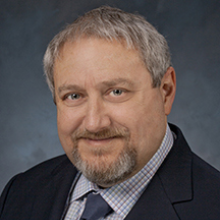-
Title
LLNL Director, 2014-2021 -
Email
goldstein3@llnl.gov -
Organization
Not Available
Professional Experience
Dr. William H. Goldstein was named the twelfth Director of the Lawrence Livermore National Laboratory (LLNL), on March 31, 2014. He is responsible for the management of the Laboratory and also serves as the President of Lawrence Livermore National Security (LLNS), LLC. As the Director, he is committed to carrying on a tradition of scientific and technical excellence in service to the Nation.
Dr. Goldstein has most recently served as Deputy Director for Science and Technology (DDST) at LLNL, where he led the strategic deployment of the Laboratory's portfolio of world-class science, technology, and engineering (ST&E) capabilities and managed the long-term health of ST&E at the Laboratory. He had line responsibility for the Laboratory’s internal ST&E investment portfolio, which includes the Laboratory Directed Research and Development (LDRD) Program, and oversaw collaborative research with academia and private industry, and institutional planning activities. Between 2001 and 2012, as Associate Director, Dr. Goldstein led the Laboratory’s Physics and Advanced Technologies Directorate which later became the Physical and Life Sciences Directorate, performing research in condensed matter and materials science, chemical and biological science, atmospheric and earth systems science, high energy density physics, nuclear science, and high energy physics, in support of LLNL’s energy, nuclear, and international security missions. Dr. Goldstein has been a leader in the establishment and management of the Department of Energy’s stockpile stewardship program. He formulated and initially led LLNL’s Physical Data Research Program, with responsibility for providing experimentally validated equations-of-state, material properties, opacities, and nuclear cross section and transport data for nuclear design.
Research Interests
Dr. Goldstein’s main research interests have been in computational modeling of highly charged ions, atomic spectroscopy, and radiative processes in plasmas. His work has significantly advanced the understanding of high energy density plasma properties through spectral modeling, and has been applied in x-ray laser, high-energy astrophysics, and fusion energy research. Dr. Goldstein co-authored the concept of atomic “super transition arrays (STA),” a major advance in the simulation of heavy element opacity and plasma kinetics. He helped develop the first spectroscopic diagnostics for astrophysical photo-ionized plasmas and designed some of the earliest laboratory astrophysics experiments using high-power lasers. Goldstein led the application of atomic modeling and the STA method to problems in the Department of Energy’s nuclear-pumped x-ray laser, weapons physics, and ICF programs that resolved a series of scientific problems.
Ph.D., Theoretical Physics, Columbia University, 1983
M. Phil., Physics, Columbia University, 1980
M.A., Physics, Columbia University, 1979
B.A., Physics, Swarthmore College, 1977
American Association for the Advancement of Science Fellow, 2009
DOE Weapons Recognition of Excellence Award, 1994


